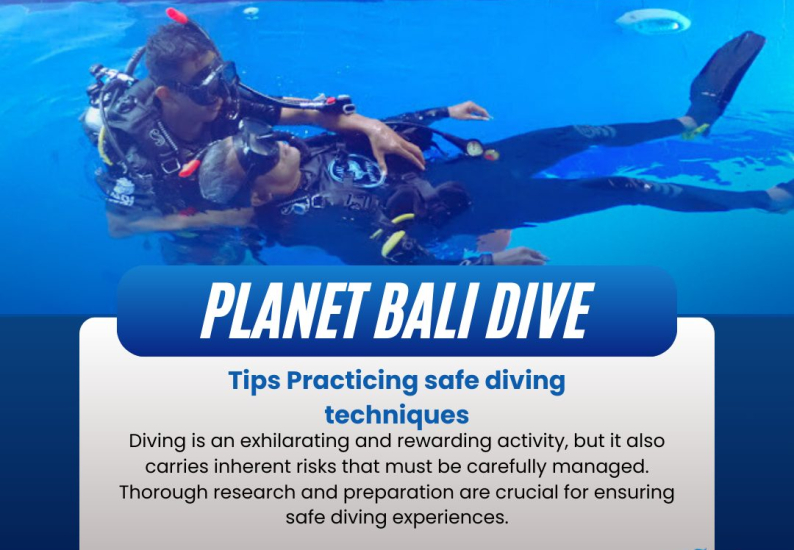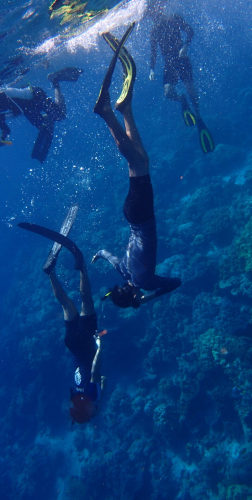Table of Contents
ToggleImportance of Proper Dive Planning
Diving is an exhilarating and rewarding activity, but it also carries inherent risks that must be carefully managed. Thorough research and preparation are crucial for ensuring safe diving experiences. Before embarking on any dive, it is essential to understand the dive site, weather conditions, and potential hazards. Developing a detailed dive plan that considers factors such as depth, duration, and emergency procedures can help mitigate risks and ensure a successful and safe dive. By taking the time to plan and prepare, divers can minimize the chances of encountering unexpected challenges and maximize their enjoyment of the underwater world.
Proper dive planning involves more than just selecting a dive site and gathering the necessary equipment. It requires a comprehensive understanding of the local environment, including currents, water temperature, and visibility. Divers should also familiarize themselves with the specific dive site, including any potential hazards, such as underwater obstructions or marine life that may pose a threat. By gathering this information and incorporating it into a well-thought-out dive plan, divers can increase their chances of a safe and enjoyable dive.
In addition to understanding the dive site, divers must also consider their own physical and mental readiness. Factors such as fitness level, medical conditions, and stress levels can all impact a diver’s performance and safety. By taking the time to assess their own capabilities and limitations, divers can ensure that they are prepared to handle the demands of the dive and respond effectively to any unexpected situations that may arise. Ultimately, proper dive planning is the foundation for safe and responsible underwater exploration, and it should never be overlooked or underestimated.
Checking and Maintaining Diving Equipment
Reliable and well-maintained diving equipment is essential for safe diving. Regular inspection and maintenance of diving gear, including regulators, buoyancy control devices, and tanks, are crucial for ensuring their proper function and reliability. Divers should familiarize themselves with the operation and troubleshooting of their equipment, and replace any worn or damaged components before each dive.
Proper equipment maintenance goes beyond just visual inspections. Divers should follow the manufacturer’s recommendations for servicing and cleaning their gear, ensuring that all components are in good working order. This may include tasks such as replacing O-rings, cleaning and lubricating moving parts, and testing the functionality of each piece of equipment. By taking the time to properly maintain their gear, divers can have confidence in their equipment’s performance and reduce the risk of equipment failures during a dive.
In addition to regular maintenance, divers should also be vigilant in checking their equipment before each dive. This includes verifying that all components are securely attached, that air tanks are fully charged, and that regulators and buoyancy control devices are functioning correctly. By taking these simple precautions, divers can identify and address any issues before they become a problem underwater. Ultimately, the responsibility for the safety and reliability of diving equipment lies with the individual diver, and a proactive approach to equipment maintenance and inspection is essential for safe diving.
Mastering Buoyancy Control
Effective buoyancy control is a fundamental skill that allows divers to maintain a stable and controlled position underwater, conserve energy, and avoid unintended ascents or descents. Divers should practice buoyancy control techniques, such as proper weighting, breath control, and use of the buoyancy control device, to develop the necessary muscle memory and confidence.
Maintaining proper buoyancy is crucial for safe diving, as it allows divers to move effortlessly through the water, conserve air, and avoid potentially dangerous situations. Divers who struggle with buoyancy control may find themselves expending unnecessary energy to stay at the desired depth, or worse, experiencing uncontrolled ascents or descents that can lead to decompression sickness or other dive-related injuries.

By mastering buoyancy control techniques, divers can develop a greater sense of control and confidence underwater. This includes learning how to adjust their weighting system to achieve neutral buoyancy, as well as practicing breath control and the use of their buoyancy control device to make fine adjustments to their depth and position. Regular practice in a controlled environment, such as a pool or shallow dive site, can help divers develop the necessary muscle memory and reflexes to maintain proper buoyancy during more challenging dives.
Ultimately, the ability to control one’s buoyancy is a critical skill for safe and enjoyable diving. By investing the time and effort to develop and refine this skill, divers can minimize the risks associated with depth-related issues, conserve their air supply, and focus on the beauty and wonder of the underwater world.
Effective Communication Underwater
Clear and concise communication between divers is crucial for coordinating actions, sharing information, and responding to emergencies. Divers should familiarize themselves with standard hand signals and underwater communication methods, and practice them regularly to ensure seamless coordination during dives.
Effective communication is essential for maintaining situational awareness and ensuring the safety of all divers in a group. Whether it’s signaling the need for a safety stop, indicating a change in direction, or alerting others to a potential hazard, the ability to communicate clearly and efficiently can make the difference between a successful and a potentially dangerous dive.
Divers should take the time to learn and practice the standard hand signals and other underwater communication methods, such as using a slate or underwater writing device. These techniques allow divers to convey important information without the need for verbal communication, which can be challenging or even impossible in the underwater environment. By mastering these communication skills, divers can ensure that they are able to effectively coordinate their actions, share critical information, and respond to any emergencies that may arise during a dive.
Regular practice and reinforcement of communication skills are also crucial for maintaining proficiency. Divers should take the time to review and rehearse hand signals and other communication methods, both in the classroom and during actual dives. This not only helps to solidify the skills but also builds the necessary muscle memory and confidence to use them effectively in real-world diving situations.
Recognizing and Responding to Dive Emergencies
Divers should be trained to identify and respond to common dive emergencies, such as equipment failures, decompression sickness, and oxygen toxicity. Knowing the appropriate actions to take, including emergency ascent procedures and first aid techniques, can help divers effectively manage and mitigate the risks associated with these situations.
Dive emergencies can arise unexpectedly and require immediate and decisive action to prevent serious injury or even loss of life. Divers who are well-trained and prepared to recognize and respond to these situations are more likely to be able to manage the crisis effectively and minimize the potential for harm.
One of the most critical skills for responding to dive emergencies is the ability to perform a controlled emergency ascent. Divers should be familiar with the proper techniques for executing a safe ascent, including maintaining a slow and steady pace, performing safety stops, and communicating with their dive buddies or surface support. Additionally, divers should be trained in first aid procedures specific to dive-related injuries, such as administering oxygen or treating decompression sickness.
Regular training and practice are essential for maintaining proficiency in emergency response. Divers should participate in refresher courses and scenario-based exercises to ensure that they are prepared to respond effectively in the event of a real-world emergency. By investing the time and effort to develop these critical skills, divers can increase their chances of safely navigating and managing dive-related crises.
Ultimately, the ability to recognize and respond to dive emergencies is a crucial component of safe and responsible diving. By prioritizing this aspect of their training and development, divers can enhance their overall safety and confidence in the underwater environment.
Adhering to Dive Depth and Time Limits
Respecting the recommended depth and time limits for a dive is essential for avoiding the risks of decompression sickness and other depth-related issues. Divers should plan their dives accordingly and be prepared to abort or terminate a dive if they approach or exceed the established limits.
Decompression sickness, also known as “the bends,” is a serious and potentially life-threatening condition that can occur when divers ascend too quickly from depth. This condition is caused by the formation of gas bubbles in the body, which can lead to a range of symptoms, including joint pain, paralysis, and even death. By adhering to recommended depth and time limits, divers can significantly reduce the risk of experiencing decompression sickness.
Dive planning is crucial for ensuring that divers remain within safe depth and time limits. This includes carefully calculating the maximum depth and duration of a dive, as well as factoring in any necessary decompression stops or safety stops. Divers should also be prepared to abort or terminate a dive if they approach or exceed these limits, even if it means cutting the dive short.
In addition to planning, divers should also be vigilant in monitoring their depth and time throughout the dive. This may involve the use of depth gauges, dive computers, or other monitoring devices to track their progress and ensure they remain within safe parameters. By maintaining a constant awareness of their depth and time, divers can make informed decisions and take appropriate actions to avoid the risks of decompression sickness.
Adhering to dive depth and time limits is a fundamental aspect of safe diving. By prioritizing this aspect of their training and practice, divers can enhance their overall safety and enjoyment of the underwater world.
Importance of Proper Breathing Techniques
Maintaining a controlled and steady breathing pattern is crucial for conserving air, managing buoyancy, and preventing the onset of dive-related illnesses. Divers should practice breathing techniques, such as slow, deep inhalations and exhalations, to develop the necessary muscle memory and control.
Proper breathing is essential for safe and enjoyable diving. When divers fail to maintain a controlled and steady breathing pattern, they can quickly deplete their air supply, experience difficulties with buoyancy control, and increase their risk of developing dive-related illnesses, such as oxygen toxicity or nitrogen narcosis.
By practicing and mastering breathing techniques, divers can learn to conserve their air supply, maintain better control over their buoyancy, and reduce the strain on their bodies during a dive. This may involve techniques such as slow, deep inhalations and exhalations, as well as controlled breathing patterns that match the demands of the dive.
Regular practice and reinforcement of breathing techniques are crucial for developing the necessary muscle memory and control. Divers should take the time to practice these techniques in a controlled environment, such as a pool or shallow dive site, before applying them during more challenging dives. This not only helps to solidify the skills but also builds the confidence and reflexes needed to maintain proper breathing underwater.
By prioritizing the development and practice of proper breathing techniques, divers can enhance their overall safety, efficiency, and enjoyment of the underwater world. This fundamental skill is a cornerstone of safe and responsible diving, and should be a priority for all divers, regardless of their experience level.
Staying Hydrated and Nourished Before and After Dives
Proper hydration and nutrition are essential for maintaining physical and mental well-being before, during, and after diving activities. Divers should ensure they are well-hydrated and have consumed a balanced meal or snack before a dive, and replenish fluids and nutrients afterward to support their recovery.
Diving places significant physical and mental demands on the body, and proper hydration and nutrition are crucial for supporting these demands. Dehydration, for example, can lead to fatigue, muscle cramps, and other health issues that can compromise a diver’s safety and performance.
Before a dive, divers should ensure they are well-hydrated by drinking plenty of water or electrolyte-rich beverages. They should also consume a balanced meal or snack that provides the necessary nutrients and energy to sustain them during the dive. This may include a combination of complex carbohydrates, lean proteins, and healthy fats.
After a dive, it is equally important for divers to replenish their fluids and nutrients. This can involve drinking water or electrolyte-replenishing drinks, as well as consuming a nutritious meal or snack that supports the body’s recovery process. By taking the time to properly hydrate and nourish themselves, divers can help reduce the risk of post-dive fatigue, muscle soreness, and other health issues.
Maintaining proper hydration and nutrition is not just a matter of physical well-being; it can also have a significant impact on a diver’s mental state and decision-making abilities. Dehydration and poor nutrition can lead to cognitive impairment, decreased focus, and increased susceptibility to stress and anxiety – all of which can compromise a diver’s safety and overall enjoyment of the underwater experience.
By prioritizing hydration and nutrition before, during, and after dives, divers can enhance their physical and mental performance, reduce the risk of dive-related health issues, and ensure a safer and more enjoyable diving experience.
Continuing Education and Skill Development
Ongoing training and skill development are crucial for maintaining and improving diving proficiency, as well as staying up-to-date with the latest safety practices and techniques. Divers should regularly participate in refresher courses, advanced training programs, and dive-specific workshops to enhance their knowledge, skills, and overall safety awareness.
The world of diving is constantly evolving, with new equipment, techniques, and safety protocols being developed all the time. By engaging in ongoing education and skill development, divers can ensure that they are equipped with the latest knowledge and skills to navigate the underwater environment safely and effectively.
Refresher courses, for example, can help divers maintain and reinforce their core diving skills, such as buoyancy control, emergency procedures, and communication techniques. These courses provide an opportunity for divers to practice and refine their abilities in a controlled setting, helping to build confidence and muscle memory.
Advanced training programs, on the other hand, can help divers expand their diving capabilities and explore new frontiers. These programs may cover specialized diving techniques, such as deep diving, wreck diving, or technical diving, as well as the use of specialized equipment and the management of more complex diving scenarios.
In addition to formal training programs, divers can also benefit from participating in dive-specific workshops and seminars. These events can provide valuable insights into the latest industry trends, safety best practices, and emerging technologies, helping divers stay informed and adapt to the changing landscape of the sport.
By prioritizing ongoing education and skill development, divers can not only enhance their own safety and proficiency but also contribute to the overall advancement of the diving community. This commitment to lifelong learning and continuous improvement is a hallmark of the most responsible and accomplished divers, and it is a crucial aspect of safe and enjoyable underwater exploration.











